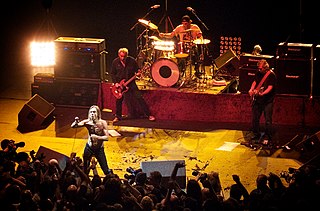
The Stooges, originally billed as the Psychedelic Stooges, and also known as Iggy and the Stooges, were an American rock band formed in Ann Arbor, Michigan, in 1967 by singer Iggy Pop, guitarist Ron Asheton, drummer Scott Asheton, and bassist Dave Alexander. Initially playing a raw, primitive style of rock and roll, the band sold few records in their original incarnation and gained a reputation for their confrontational performances, which often involved acts of self-mutilation by Iggy Pop.

MC5 was an American rock band formed in Lincoln Park, Michigan, in 1963. The classic line-up consisted of vocalist Rob Tyner, guitarists Wayne Kramer and Fred "Sonic" Smith, bassist Michael Davis, and drummer Dennis Thompson. MC5 were listed by Parade as one of the best rock bands of all time and by VH1 as one of the greatest hard rock artists of all time. The band's first three albums are regarded by many as staples of rock music, and their 1969 song "Kick Out the Jams" is widely covered.
? and the Mysterians are an American garage rock band from Bay City and Saginaw in Michigan, initially active between 1962 and 1969. Much of the band's music consisted of electric organ-driven garage rock and an enigmatic image inspired by the 1957 Japanese science fiction film The Mysterians. In addition, the band's sound was also marked by the raw, resonating lead vocals of "?", making Question Mark and the Mysterians one of the earliest groups whose musical style is described as punk rock. Their music and imagery were highly influential on later bands.

Quicksilver Messenger Service is an American psychedelic rock band formed in 1965 in San Francisco. The band achieved wide popularity in the San Francisco Bay Area and, through their recordings, with psychedelic rock enthusiasts around the globe, and several of their albums ranked in the Top 30 of the Billboard Pop charts. They were part of the new wave of album-oriented bands, achieving renown and popularity despite a lack of success with their singles. Though not as commercially successful as contemporaries Jefferson Airplane and the Grateful Dead, Quicksilver was integral to the beginnings of their genre. With their jazz and classical influences and a strong folk background, the band attempted to create an individual, innovative sound. Music historian Colin Larkin wrote: "Of all the bands that came out of the San Francisco area during the late '60s, Quicksilver typified most of the style, attitude and sound of that era."

‘Live’ Bullet is a live album by American rock band Bob Seger & the Silver Bullet Band, released in April 1976. It was recorded at Cobo Hall in Detroit, Michigan, during the heyday of that arena's time as an important rock concert venue. The album is credited, along with Night Moves, with launching Seger's mainstream popularity.

Robert Clark Seger is a retired American singer, songwriter, and musician. As a locally successful Detroit-area artist, he performed and recorded with the groups Bob Seger and the Last Heard and the Bob Seger System throughout the 1960s, breaking through with his first album, Ramblin' Gamblin' Man in 1969. By the early 1970s, he had dropped the 'System' from his recordings and continued to strive for broader success with various other bands. In 1973, he put together the Silver Bullet Band, with a group of Detroit-area musicians, with whom he became most successful on the national level with the album Live Bullet (1976), recorded live with the Silver Bullet Band in 1975 at Cobo Hall in Detroit, Michigan. In 1976, he achieved a national breakout with the studio album Night Moves. On his studio albums, he also worked extensively with the Alabama-based Muscle Shoals Rhythm Section, which appeared on several of Seger's best-selling singles and albums.

The Dandy Warhols are an American psychedelic/alternative rock band, formed in Portland, Oregon, in 1994 by singer-guitarist Courtney Taylor-Taylor and guitarist Peter Holmström. They were later joined by keyboardist Zia McCabe and drummer Eric Hedford. Hedford left in 1998 and was replaced by Taylor-Taylor's cousin Brent DeBoer. The band's name is a play on the name of American pop artist Andy Warhol.
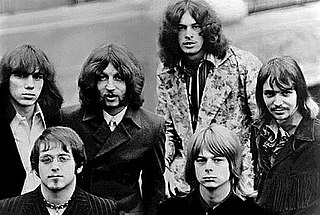
The Amboy Dukes were an American rock band formed in 1964 in Chicago, Illinois, and later based in Detroit, Michigan. They are best known for their only hit single, "Journey to the Center of the Mind". The band's name comes from the title of a novel by Irving Shulman. In the UK, the group's records were released under the name of the American Amboy Dukes, because of the existence of a British group with the same name. The band went through a number of personnel changes during its active years, the only constant being lead guitarist and composer Ted Nugent. The band transitioned to being Nugent's backing band before he discontinued the name in 1975.
Sonic's Rendezvous Band was an American rock and roll band from Ann Arbor, Michigan, United States, forming in 1974, featuring veterans of the 1960s Detroit rock scene.
Terry Knight and the Pack was an American garage rock band formed in Flint, Michigan in 1965. The band was signed to the Lucky Eleven label through most of its brief recording career. They produced one national hit with their cover version of the song, "I ". Despite their inability to replicate their success, the band was a frequent attraction in the Michigan rock scene. The Pack was fronted by singer Terry Knight. In 1969 the group disbanded but two members, drummer/vocalist Don Brewer and guitarist Mark Farner, would go on to form another band, Grand Funk Railroad.
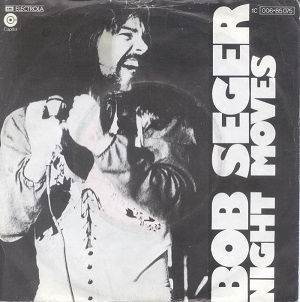
"Night Moves" is a song by American singer-songwriter Bob Seger. It was the lead single from his ninth studio album of the same name (1976), which was released on Capitol Records. Seger wrote the song as a coming of age tale about adolescent love and adult memory of it. It was based on Seger's teenage love affair, which he experienced in the early 1960s. It took him six months to write and was recorded quickly at Nimbus Nine Studios in Toronto, Ontario, with producer Jack Richardson. As much of Seger's Silver Bullet Band had returned home by this point, the song was recorded with several local session musicians.

The Sons of Champlin are an American rock band, from Marin County, California, in the San Francisco Bay Area, formed in 1965. They are fronted by vocalist-keyboardist-guitarist Bill Champlin, who, after leaving the group in 1977, joined the rock band Chicago from 1981 to 2009, reforming the Sons of Champlin in 1997. They brought to the late ‘60s music scene in the Bay Area a soulful sound built around a horn section, Hammond B3 organ, sophisticated arrangements, philosophical themes, Bill Champlin's songwriting and blue-eyed soul singing, and Terry Haggerty's unique jazz-based guitar soloing. They are one of the enduring 1960s San Francisco bands, along with Jefferson Airplane, the Grateful Dead and Moby Grape.
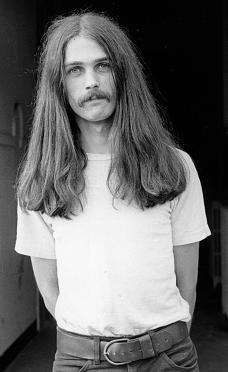
Gary Grimshaw was an American graphic artist active in Detroit and San Francisco who specialized in designing rock concert posters. He was also a radical political activist with the White Panther Party and related organizations.
"European Son", also known as "European Son ", is a song written and performed by the American experimental rock band The Velvet Underground. It appears as the final track on their 1967 debut album The Velvet Underground & Nico. It is also the album's longest track at more than seven and a half minutes.
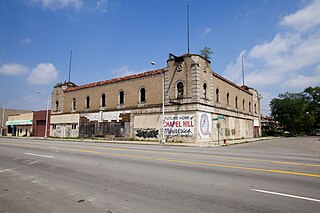
The Grande Ballroom is a historic live music venue located at 8952 Grand River Avenue in the Petosky-Otsego neighborhood of Detroit, Michigan. The building was designed by Detroit engineer and architect Charles N. Agree in 1928 and originally served as a multi-purpose building, hosting retail business on the first floor and a large dance hall upstairs. During this period the Grande was renowned for its outstanding hardwood dance floor which took up most of the second floor.
Thomas "Zeke" Zettner was a member of the American rock band the Stooges. Zettner had originally been a roadie for the band, but replaced original Stooges bassist Dave Alexander after their second album Fun House until the end of 1970. Alexander's drinking problem had made him an unreliable performer. Jimmy Recca soon replaced Zettner as bass player.

SRC is the eponymous debut studio album by SRC, released in November 1968 on Capitol Records. This would be the only album that Robin Dale would play on as he left shortly after this album was released.
Pitche Blende was an American garage rock/psychedelic rock band formed in 1967, in Saginaw, Michigan. The group was composed of high school students, mostly from Arthur Hill High School, and became a regional success in the early Michigan Rock culture movement of the late 1960s and early 1970s. The band consisted of six members which included two sisters, vocalist Laurie Seaman and bassist Jinny Seaman, guitarist Dennis Malenfant, rhythm guitarist Dan Quinnan, drummer Mike Volker and singer Tom Morris. Clara Jeanne Seaman, mother of Laurie and Jinny, was the band's manager.

The Index were an American garage rock/psychedelic rock band from Grosse Pointe, Michigan who were active from 1966-1969 and are known for a sound characterized by droning guitars, as heard on their two albums, both released in 1968. Though they remained largely unknown for a number of years, since the 1980s they have come to the attention of garage rock collectors and fans.
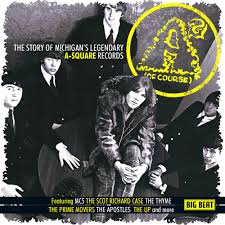
A-Square : The Story of Michigan's Legendary A-Square Records is a collection of garage rock songs originally recorded in the 1960s for the Ann Arbor, Michigan-based A-Square label, which has been compiled for this release by Big Beat Records. Michigan had one of the most active garage rock scenes in the country and Jeep Holland was one of its prime movers, as the owner of one of the city's most premier record stores and founder/proprietor of the A-squared label. This collection focuses on the pivotal period in the later half of 1960s as garage rock began encompass psychedelic influences and gravitate towards heavier sounds, typified by groups such as MC5, two of whose pre-Elektra songs are showcased here. All of the tracks are taken off of source tapes from A-Square's vaults. Noted rock journalist Alec Palao compiled the set and wrote its liner notes.













